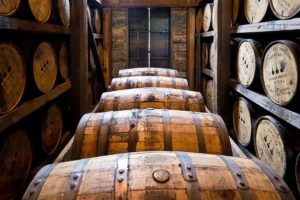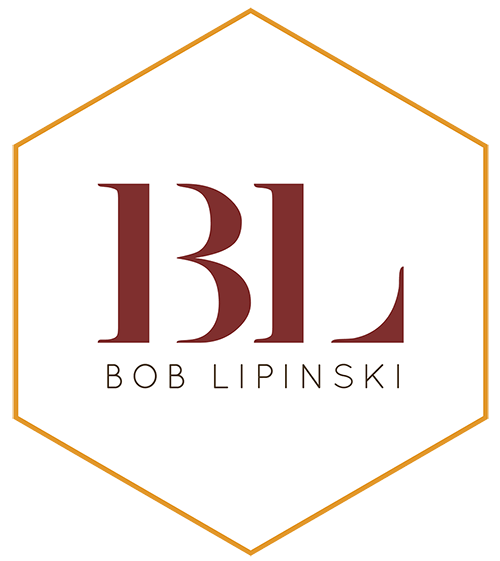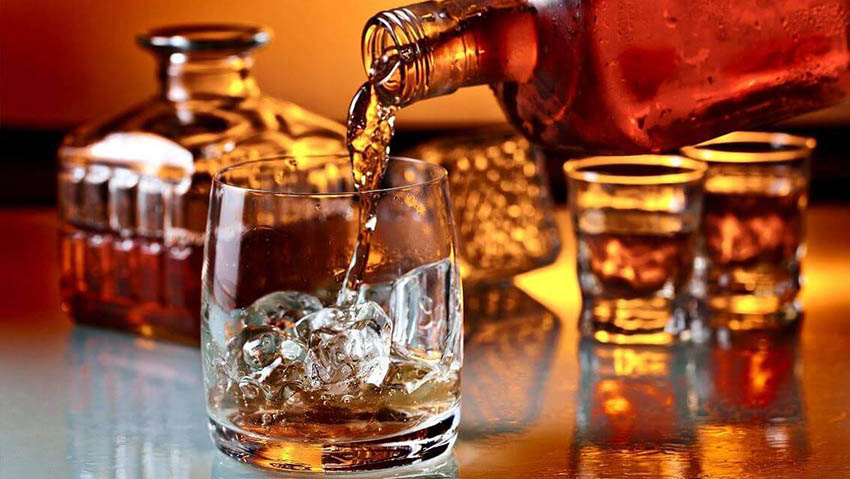By Bob Lipinski
What is Bourbon Whiskey?
A distinctive whiskey of Kentucky (mainly) made from a grain mixture of a minimum of 51 percent corn (there is no upper limit); distilled twice at no higher than 160-proof. It is put into new, charred oak barrels (as of 1938) at not more than 125-proof (as of 1962). The crystal-clear liquid which comes off the still is called high wine, new whiskey, or white dog and is ready for aging.
Where is it Made?
Bourbon whiskey can be produced anywhere in the United States (and its territories, which include Puerto Rico, Guam, and the U.S. Virgin Islands), although over 90 percent is made in Kentucky. Bourbon is produced in all 50 states.
Is Bourbon Made in Bourbon County, Kentucky?
Yes, even though Bourbon County is a dry county. (Bourbon cannot be sold in a “dry county.”) A “dry county” (or similar governmental jurisdiction) is a county (United States) whose voters have not approved the sale of alcoholic beverages. Counties permitting sale only by private clubs are considered dry. It is a continuation of Prohibition for that county.
Where did the Name Bourbon Originate?
Back in the mid- to late-1700s practically all of Kentucky was a part of Virginia and a large part of the region was called “Bourbon County.” An often-told story is that in 1785, Bourbon County was so-named by settlers in honor of the French Royal Family—the Bourbons, who helped the colonists win the American Revolutionary War.
However, a more plausible explanation says the whiskey was named after Bourbon Street, the entertainment district in New Orleans. Bourbon whiskey was being shipped to New Orleans in barrels via the Mississippi River and eventually people recognized the quality of the product and asked for the whiskey sold on Bourbon Street.
When was the First Bourbon Whiskey Made?
Although there are countless articles, accounts, stories, press releases, and entries in books, the truth is no one knows for sure when bourbon whiskey was first made, or who the first Kentucky distiller was. The name “bourbon” appeared on labels as early as the 1850s. Two distillers often erroneously mentioned as producing the first bourbon whiskey are Evan Williams (in 1783) and Elijah Craig (in 1789).
What are the Ingredients?
Federal regulations require that bourbon whiskey be made from a minimum of 51 percent corn; however, 65 to 75 percent is generally used. The higher the corn content and lower the percentage of other grains, the lighter the whiskey. The blend of other grains is dictated by the distiller’s own private formula; barley, oats, rye, and wheat can be used. Bourbon, other than “Straight Bourbon Whiskey,” may contain coloring, flavoring, or other ingredients.

How Long is Bourbon Aged?
Bourbon must be aged in new, charred oak barrels (as of 1938), ranging in capacity from 50 to 66 gallons (minimum of two years to be labeled “Straight Bourbon Whiskey”). Although most distillers age their bourbon anywhere from four to 10 years, if it is released before the fourth year of aging, it must be stated on the label.
There is no minimum amount of aging for non-Straight “Bourbon Whiskey” and technically a distiller could pump the clear distillate into a new charred oak barrel and then immediately empty it. It would legally meet federal requirements, although the product would probably be inferior in quality and taste.
According to U.S. federal regulations, bourbon doesn’t have to be aged in American or white American oak barrels. It must be aged in new, charred oak barrels. So, Bourbon can be aged in French oak (Allier, Limousin, Nevers, Tronçais), Brazilian, Hungarian, Irish, Spanish, or even Japanese Mizunara oak, providing the barrel is new and charred.
What About Straight Bourbon Whiskey?
“Straight Bourbon Whiskey” must adhere to the basic bourbon whiskey rules regarding grain blend, distillation proof, and storage proof in new, charred oak barrels. In addition, “Straight Bourbon Whiskey” must be aged a minimum of two years. If it is released before the fourth year of aging, it must be stated on the label. Even if the whiskey is legally ‘straight,’ there is no requirement to use the term on the label; it is optional. In addition, no alcohol, caramel coloring, or flavoring can be added. However, a “straight whiskey” may contain coloring or flavoring, providing a modifier is added. For example, Distillery ABC produces a “Kentucky Straight Bourbon Whiskey Infused With Natural Flavors.” Distilled water may be added to the bourbon before bottling to achieve the proper bottling proof, which must be at least 80-proof, however, many are bottled above 100-proof.
“How well I remember my first encounter with The Devil’s Brew. I happened to stumble across a case of Bourbon—and went right on stumbling for several days thereafter.” (W.C. Fields, 1880-1946, American Comic and Actor)
Bob Lipinski, the author of 10 books on alcoholic beverages and food, consults and conducts training seminars on Wine, Spirits, and Food, and is available for speaking engagements. He can be reached at www.BobLipinski.com OR Bob@BobLipinski.com


 Bob Lipinski, author of 10 books; writes, consults, and conducts training seminars on Wine, Spirits, and Food and is available for speaking engagements.
Bob Lipinski, author of 10 books; writes, consults, and conducts training seminars on Wine, Spirits, and Food and is available for speaking engagements.
Recent Comments